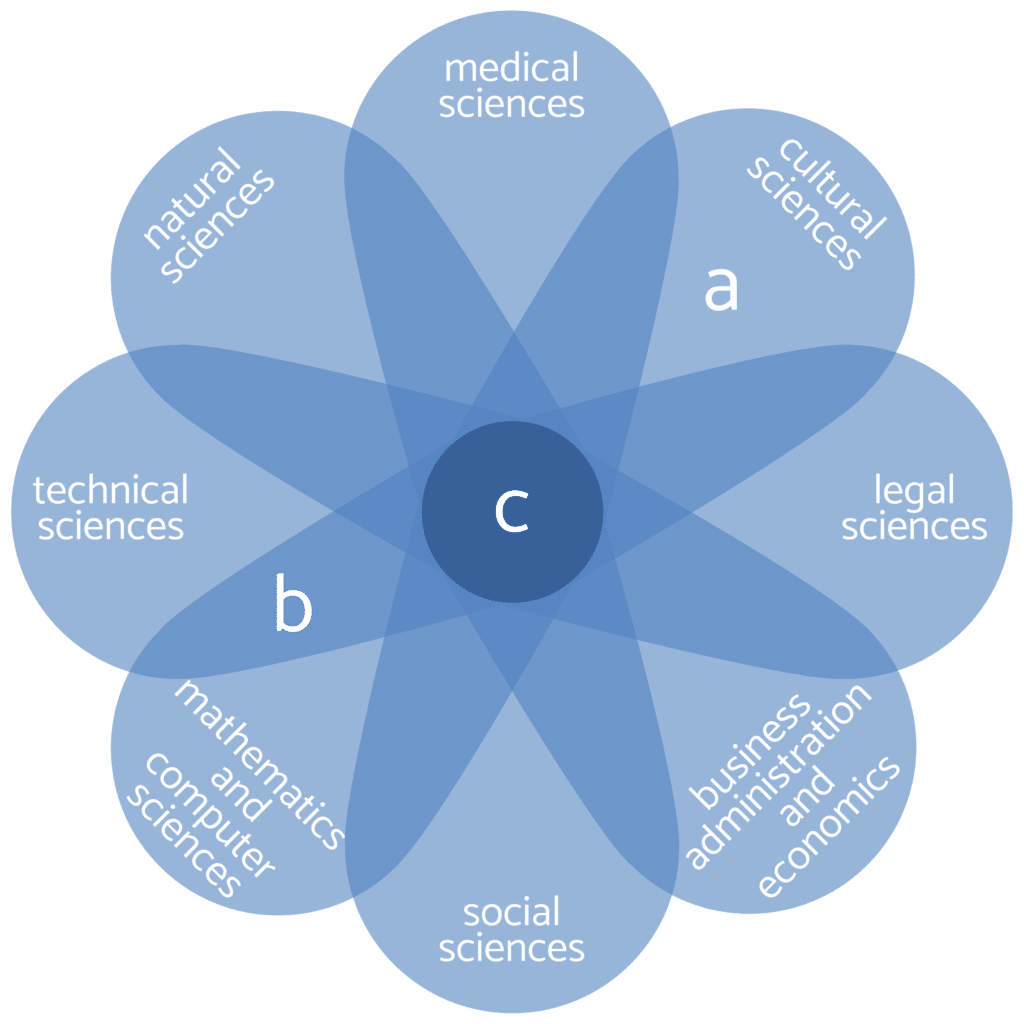
(Subject-specific) scholastic aptitude tests are cognitive tests. Cognitive tests are the best alternative compared to other selection procedures, as has been proven in a number of national and international studies. They are economical to conduct and evaluate, they are objective and they provide a very good prediction of study success. They are therefore clearly superior to other selection criteria such as interviews, letters of recommendation or letters of motivation.
Scholastic aptitude encompasses a variety of individual abilities that enable successful study. Scholastic aptitude tests are a simulation of typical requirements in university studies and assess the intellectual abilities necessary for studying, such as analytical thinking and text comprehension. In contrast to classical intelligence tests, scholastic aptitude tests assess the ability to understand and analyse more complex information and are more precisely tailored to the level of ability of applicants.
A distinction can be made between general and subject-specific scholastic aptitude tests. While general scholastic aptitude tests measure intellectual abilities that are important for almost all academic programmes, subject-specific scholastic aptitude tests measure abilities that are important for the successful study of certain fields of study
Based on the Deidesheimer Kreis (1997), we define subject-specific scholastic aptitude tests as follows:
“A subject-specific scholastic aptitude test is a test that measures those abilities and skills that are particularly important for coping with the demands of a particular field of study. A subject-specific scholastic aptitude test is developed for a single degree programme or for a group of degree programmes with similar requirements. The focus is on measuring cognitive abilities. Attitudes, interests, motives or personality traits are not directly recorded.”. (Schult, Hofmann, & Stegt, 2019)
In cooperation with experts (e.g. professors, lecturers), we have designed our scholastic aptitude tests in such a way that they best reflect the subject-specific requirements of the respective degree programmes.
Our scholastic aptitude tests are based on the “flower model”, which illustrates the requirements specific to a field of study (A), the overlapping of the requirements of “neighbouring” fields of study (B) and non-specific, i.e. general requirements of a course of study (C). The ability to recognise tonal and rhythmic structures in linguistic formations, which is particularly specific to the philologies, is an example of area A. The ability to express a verbally described sequence of events in a mathematical formula, which is important both for technical sciences and for mathematics and computer science, is an example of area B. The ability to correctly process and apply complex information from texts is an example for area C.
